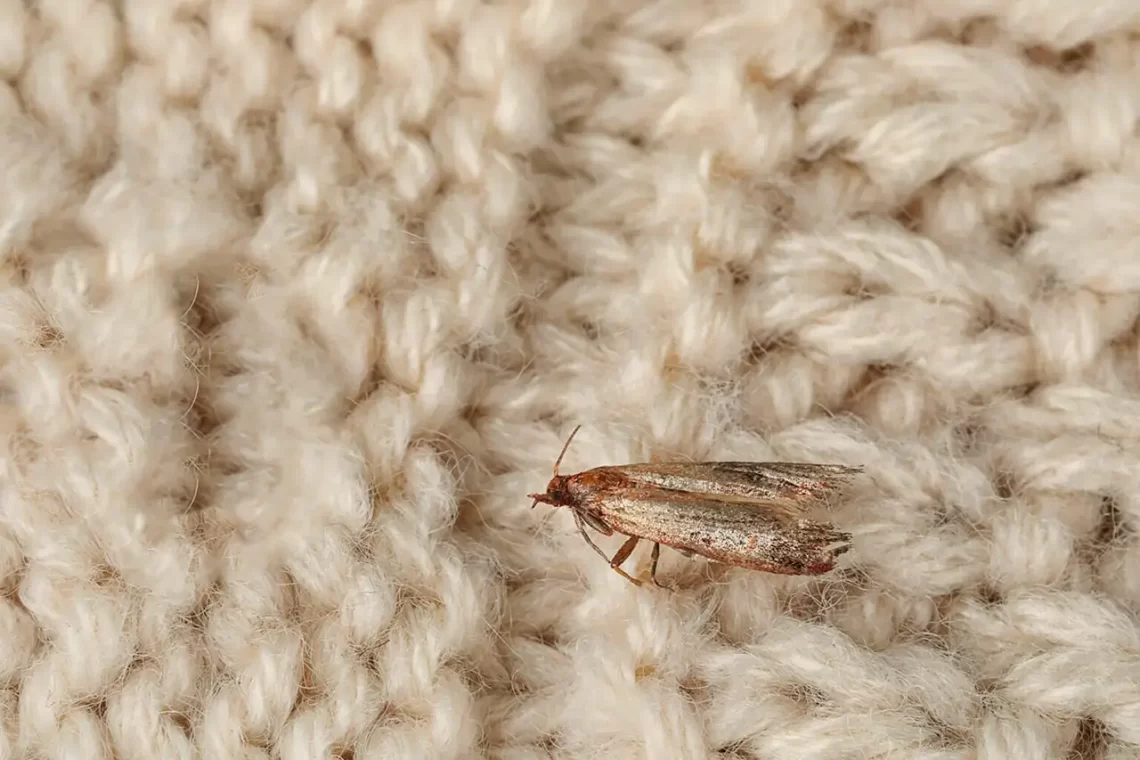
How to Protect Your Clothing from Moths
Clothing moths are a common pest that can cause significant distress when found in a man’s wardrobe. These small insects can cause damage, leaving holes and damage in their wake. This can be especially distressing for items that are sentimental, expensive, or hard to replace. The cost of replacing a single piece of clothing can be significant, and when an entire wardrobe is affected, the costs can add up quickly. Additionally, if professional exterminators need to be brought in to get rid of the moths, the cost can be even more.
What are clothes moths?
Clothes moths, also known as textile moths, are a type of insect that can cause damage to natural fibers such as wool, silk, and feathers. The most common types of clothes moths are the webbing clothes moth and the case-making clothes moth.
Clothes moths are small, with a wingspan of about 1/2 inch. They are generally a pale golden color, with a slightly furry appearance. The larvae, or caterpillars, are small and white, and spin silken webs as they eat.
Clothes moths are attracted to natural fibers, particularly those that are dirty or soiled with sweat or food stains. They lay their eggs on these fibers, and when the eggs hatch, the larvae begin to feed on the fabric. Over time, this can cause holes and damage to clothing, upholstery, and other textiles.
Protection from Moths
There are several effective ways to protect your clothes from moths:
- Keep clothes clean: Moths are attracted to dirty or soiled clothes, so it’s important to keep your clothes clean and stored in airtight containers. Regularly washing or dry cleaning clothes and storing them in sealed plastic bags or containers can help to prevent moth infestations.
- Store clothes properly: When storing clothes, make sure they are clean and dry, and store them in airtight containers or sealed plastic bags. Avoid using cardboard boxes, which can attract moths.
- Use natural repellents: Natural repellents such as cedar wood, lavender, or peppermint can be effective in deterring moths. You can use cedar blocks, sachets or hangers, or essential oils to keep moths away. However, natural repellents need to be replaced or replenished over time, which can be costly and time-consuming. It is recommended that, if you use natural repellents, you combine them with other preventative measures.
- Use of moth traps: You can also use moth traps to monitor and control the moths. These traps usually use a pheromone lure to attract male moths and prevent them from reproducing.
- Regularly vacuum and clean: Vacuuming and cleaning closets and other storage areas on a regular basis can help to remove any eggs or larvae that may be present. Be sure to vacuum corners and crevices, and to wash any removable covers or linings.
- Inspect for moths and larvae: Regularly inspect your clothes, especially if you notice any damage or holes. Look for small white larvae or cocoons. If you do find evidence of moths, it is important to take action quickly to prevent further damage.
- Use of professional exterminators: If you have a severe infestation, you may need to contact a professional exterminator who can use specialized equipment and chemicals to eliminate the moths and their larvae.
If you do have a clothes moth infestation, it’s important to take action quickly. It’s best to start by cleaning all the affected areas thoroughly and then use an insecticide specifically designed for clothes moths.
By following these tips, you can effectively protect your clothes from moths and preserve them for a long time. Remember that moths are attracted to natural fibers and keeping them clean, stored properly, and using natural repellents can greatly reduce the chance of moth infestation.




